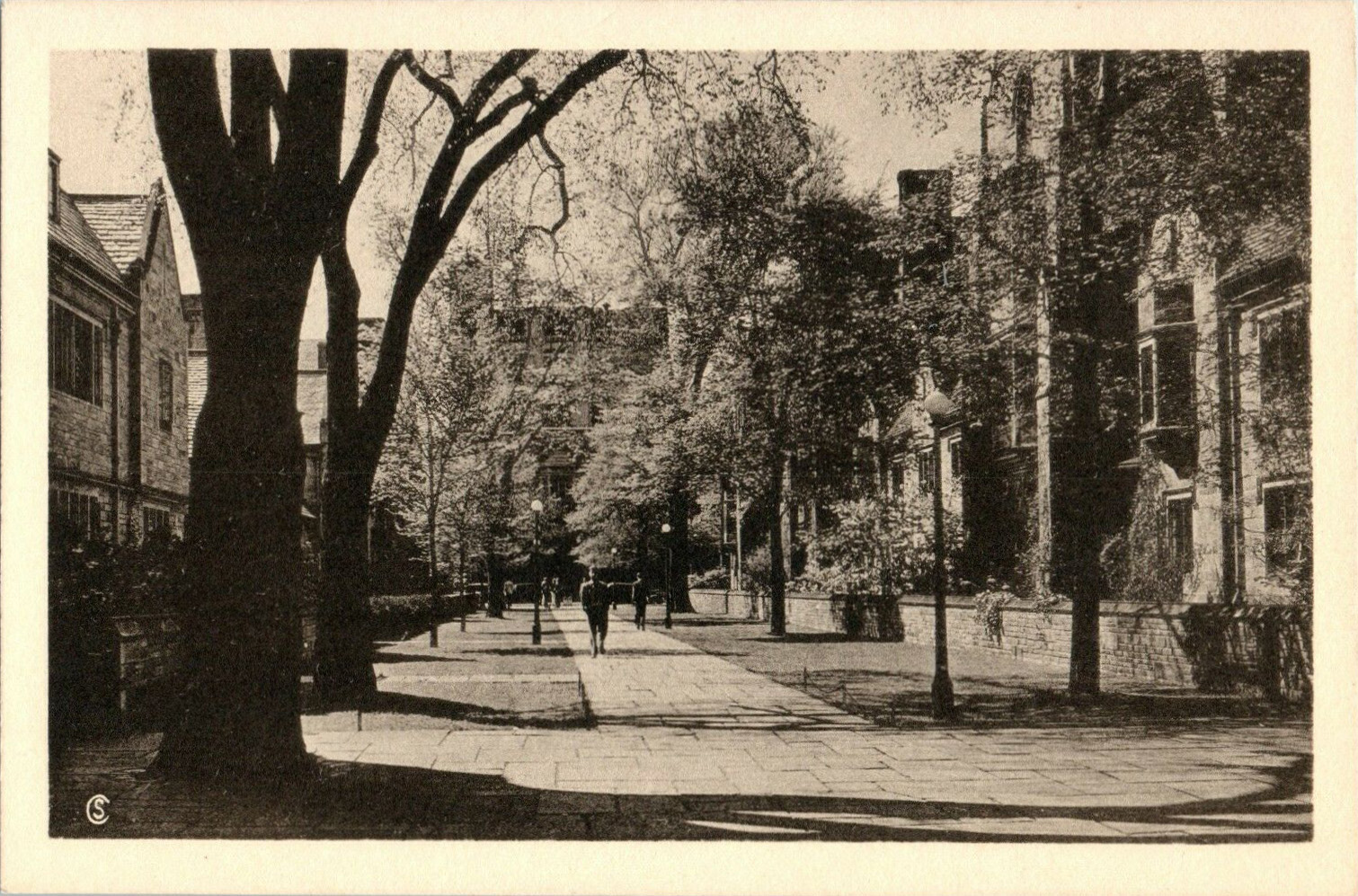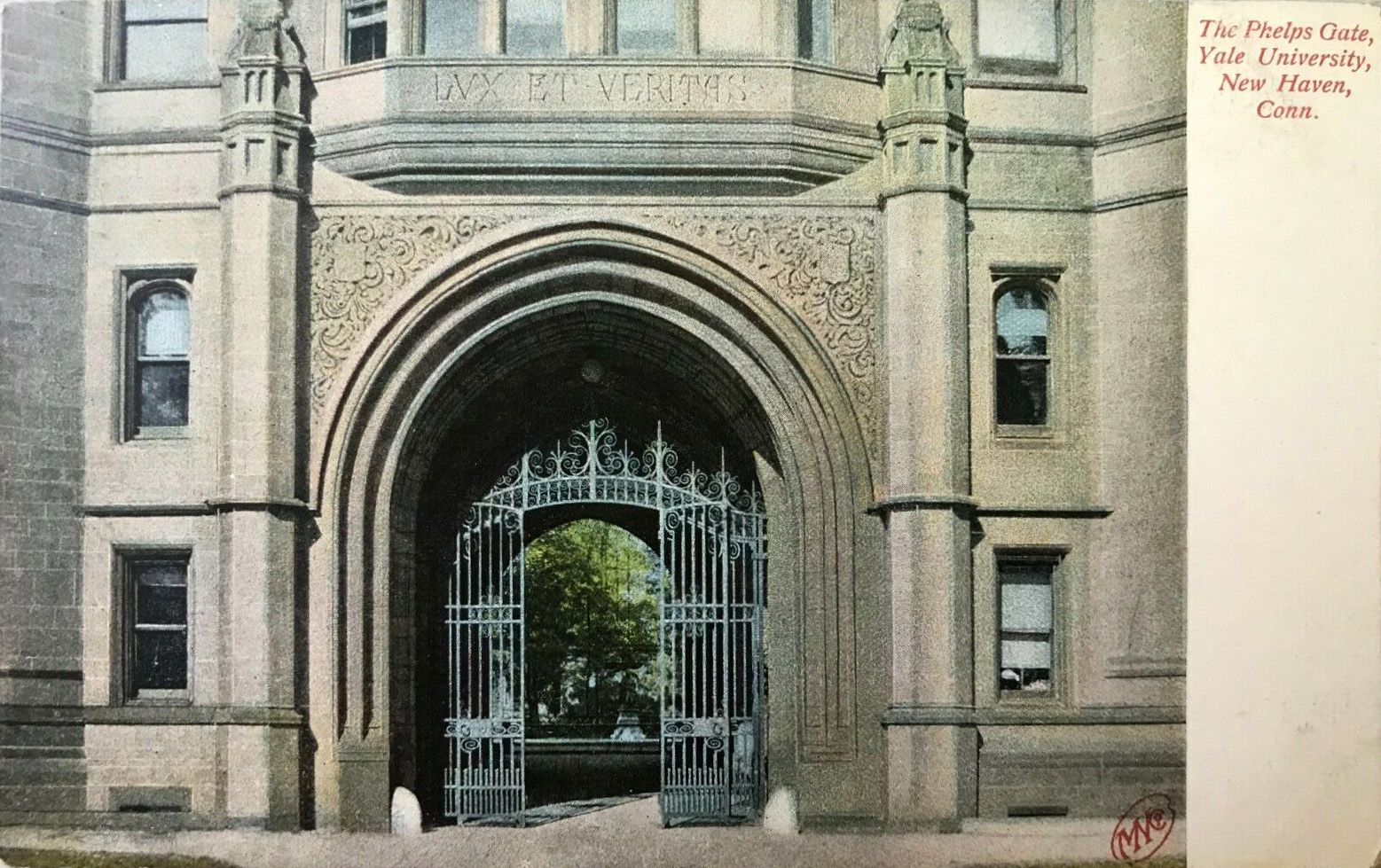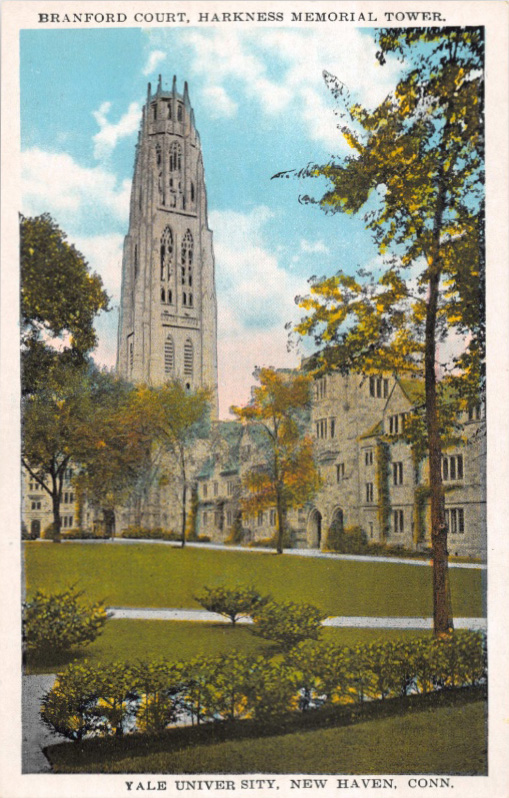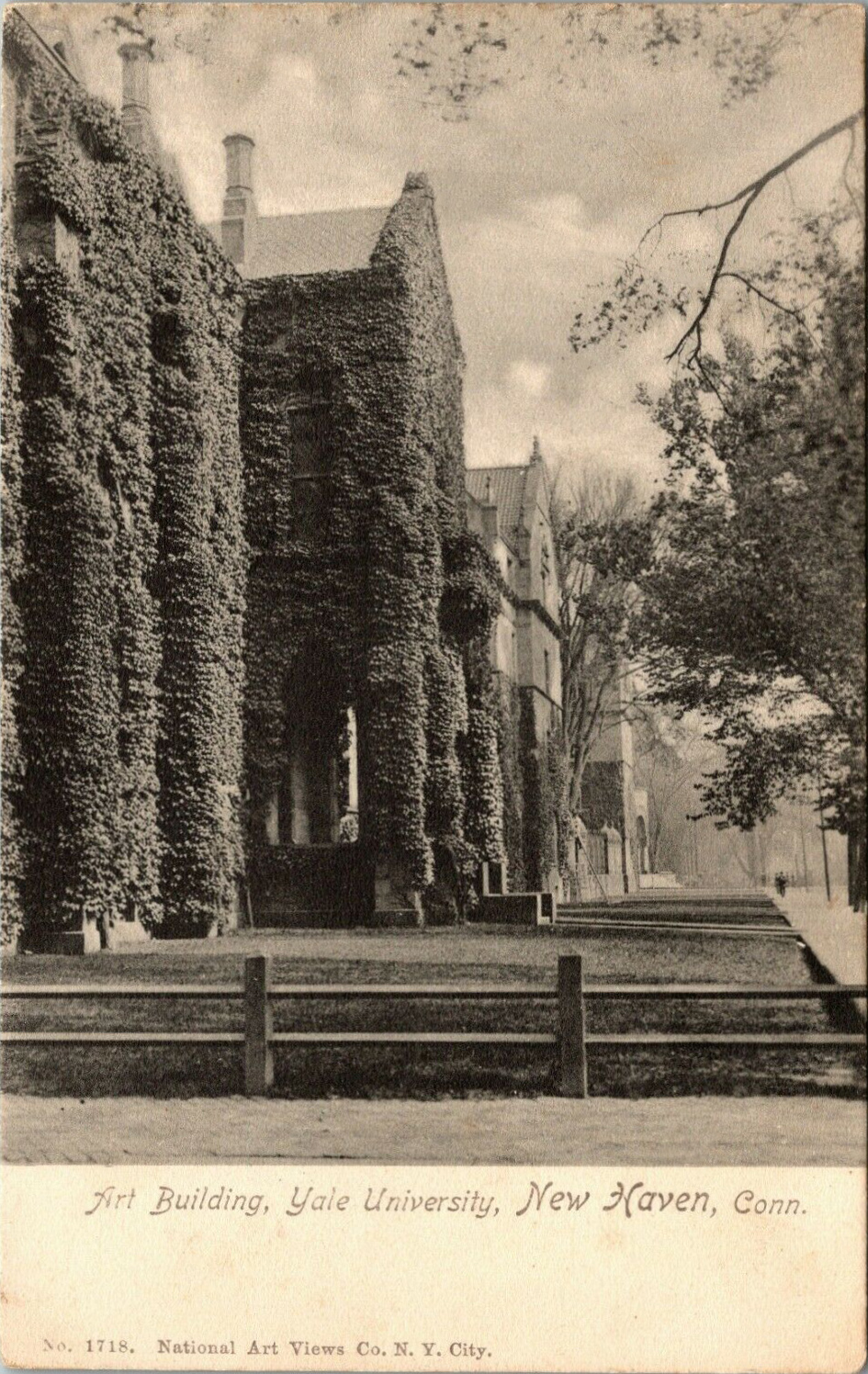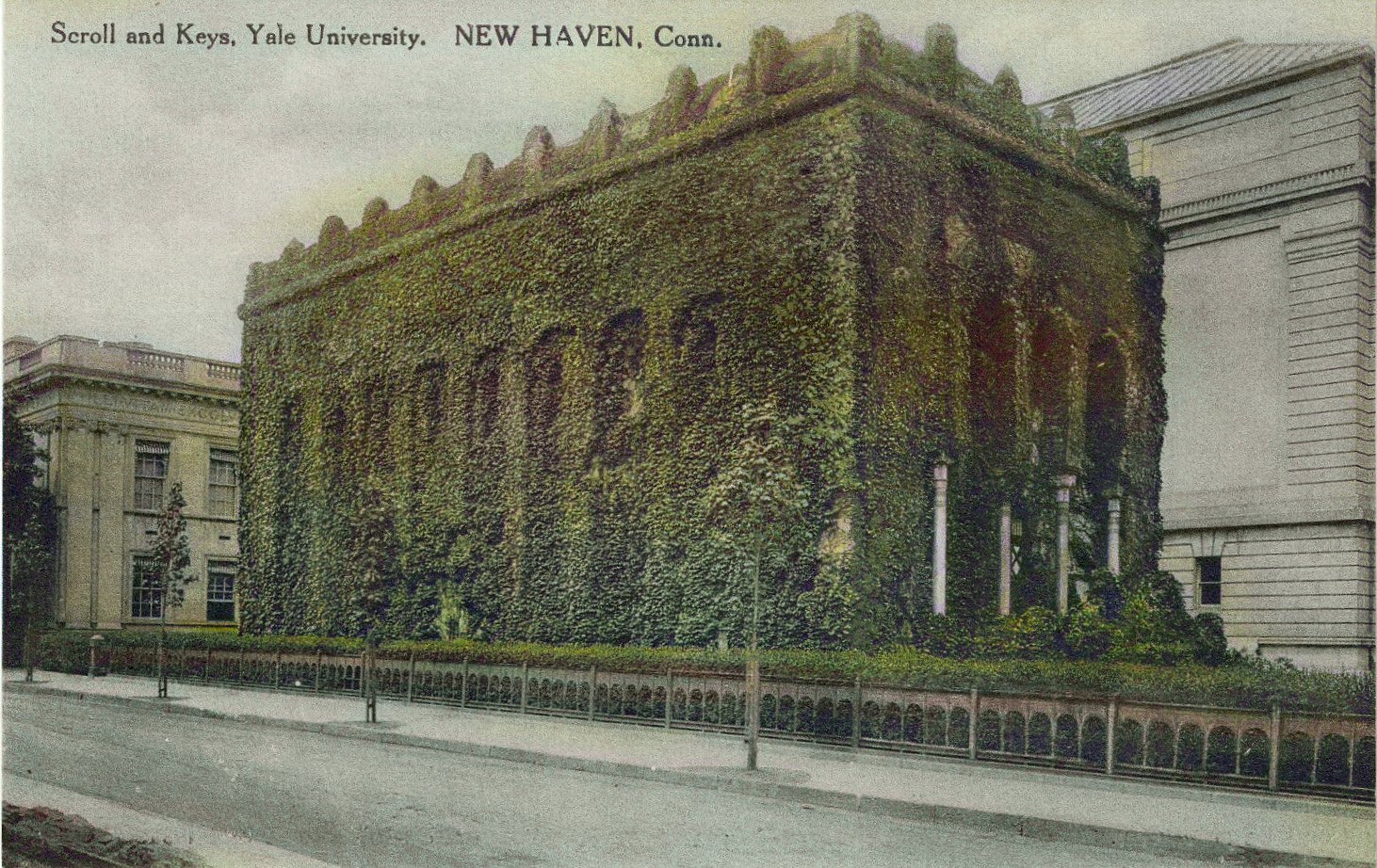This week in the Friday ‘Picture Postals’, another look at academic environments known to H.P. Lovecraft. This time, his visit to Yale in 1935. Sadly he was not visiting as an honoured guest, invited to lecture and conduct a symposium. He was merely an architectural and antiquarian tourist. He wrote similar descriptions of his campus visit to Rimel, White and possibly to others. Here he writes to White…
[I visited the] college buildings, &c., & […] 3 museums & 2 botanic gardens. The most impressive sights of all, perhaps, are the great new quadrangles of Yale University — each an absolutely perfect reproduction of old-time architecture & atmosphere, & forming a self-contained little world in itself. The Gothic courtyards transplant one in fancy to mediaeval Oxford or Cambridge — spires, oriels, pointed arches, mullioned windows, arcades with groined roofs, climbing ivy, sundials, lawns, gardens, vine-clad walls & flagstoned walks — everything to give the young occupants that massed impression of their accumulated cultural heritage which they might obtain in Old England itself.
To stroll through these quadrangles in the golden afternoon sunlight; at dusk, when the candles behind the diamond-paned casements flicker up one by one; or in the beams of a mellow Hunter’s Moon; is to walk bodily into an enchanted region of dream. It is the past & the ancient mother land brought magically to the present time & place.
The choicest of these quadrangles is Calhoun College — named from the illustrious Carolinian (whose grave in St. Philips churchyard, Charleston, I visited only 2 months ago), who was a graduate of Yale.
Calhoun College was erected at Yale between 1931 and 1932, complete with a fine new quadrangle. The new building was not a plain 1930s modernist box. It was something that Lovecraft the antiquarian could admire. Brand-new though it was. He visited in the unusually fine and warm fall/autumn weather of late 1935, and after a few years had mellowed the newness and given the place some plant-life.
The quadrangle is very difficult to find a vintage photograph of, even on postcards. Perhaps they had a ‘no photography’ policy after opening. Anyway, the Yale archives has just one, seen above newly colorised by myself. We see the quad when it was when ‘just that week’ completed, and my guess is that the architect and the carpenter (seen in the picture) are just starting the very first ‘race around the quad’.
One might have expected Lovecraft to have visited the Yale University Observatory, but he doesn’t appear to mention it in the letters I have access to. Possibly it wasn’t deemed a public attraction for visitors. But he did see the 1917 Harkness Tower and Lovecraft was also enamoured of the other Yale quadrangles, these being freely accessible. Here he is again writing to White…
Nor are the Georgian quadrangles less glamorous — each being a magical summoning-up of the world of two centuries ago. I wandered for hours through the limitless labyrinth of unexpected elder microcosms.
He further writes to Galpin…
Many distinct types of Georgian architecture are represented [at Yale], & the buildings & landscaping alike reflect the finest taste which European civilisation has yet developed or is ever likely to develop.
As we see here, many universities abundantly earned their once-familiar name of ‘groves of academe’, being very abundant with foliage. It was the same back in Great Britain. Even there, some colleges took things to excess. In 1920 even Country Life magazine complained of… “the Fellows of Exeter, something really ought to be done about their excessive love of greenery”. This was Tolkien’s college, Exeter College, Oxford. As we can see below, parts of Yale ran them a close second…
A few years earlier, Lovecraft had been amused to discover that Frank Belkap Long’s family had once owned all of Yale…
So your multiplexly great uncle Mansfield owned all the Yale real-estate! … Well — pass me out an extension course or two when you confirm your title to the property.”

